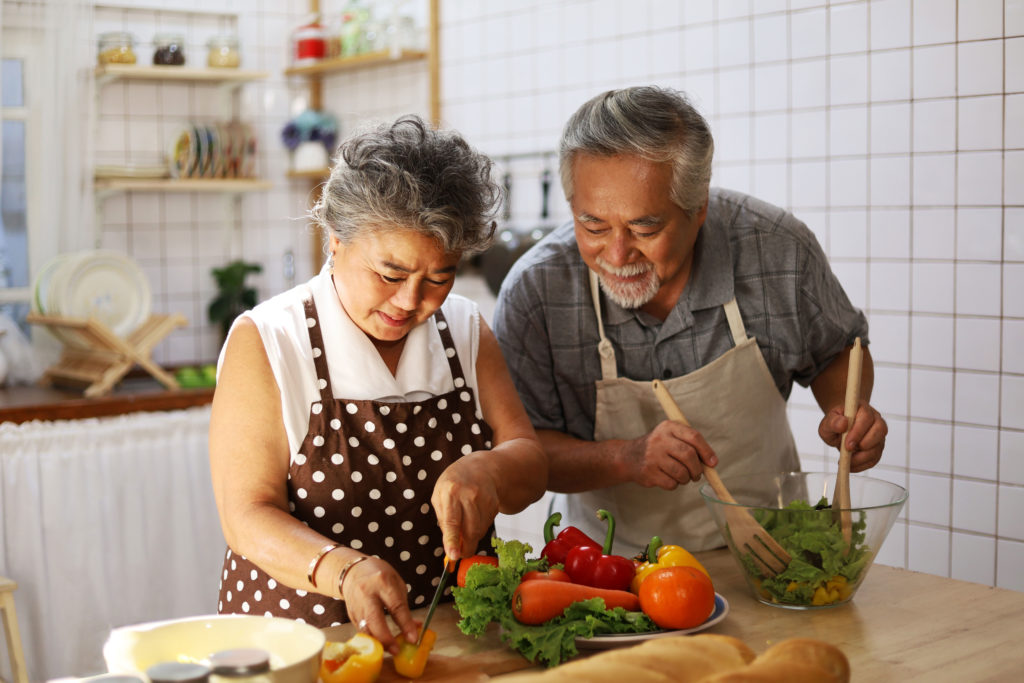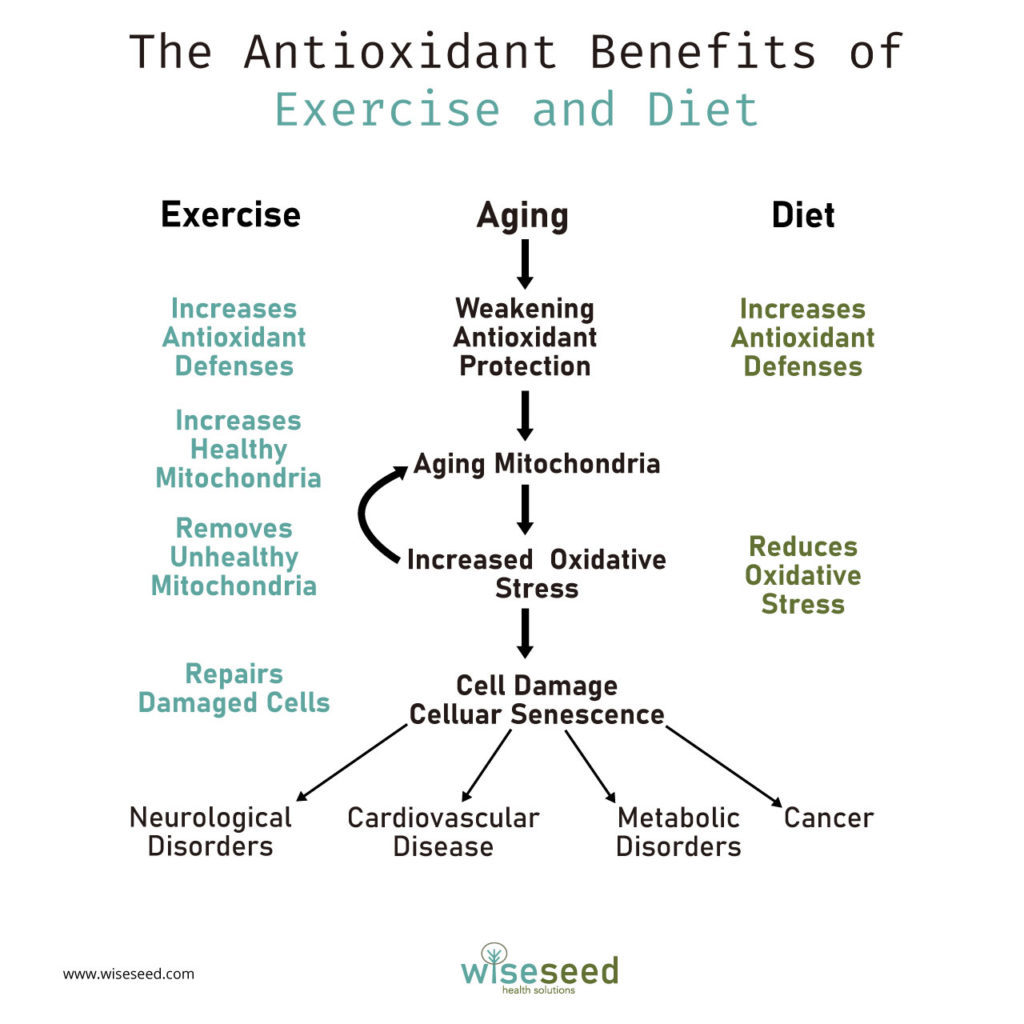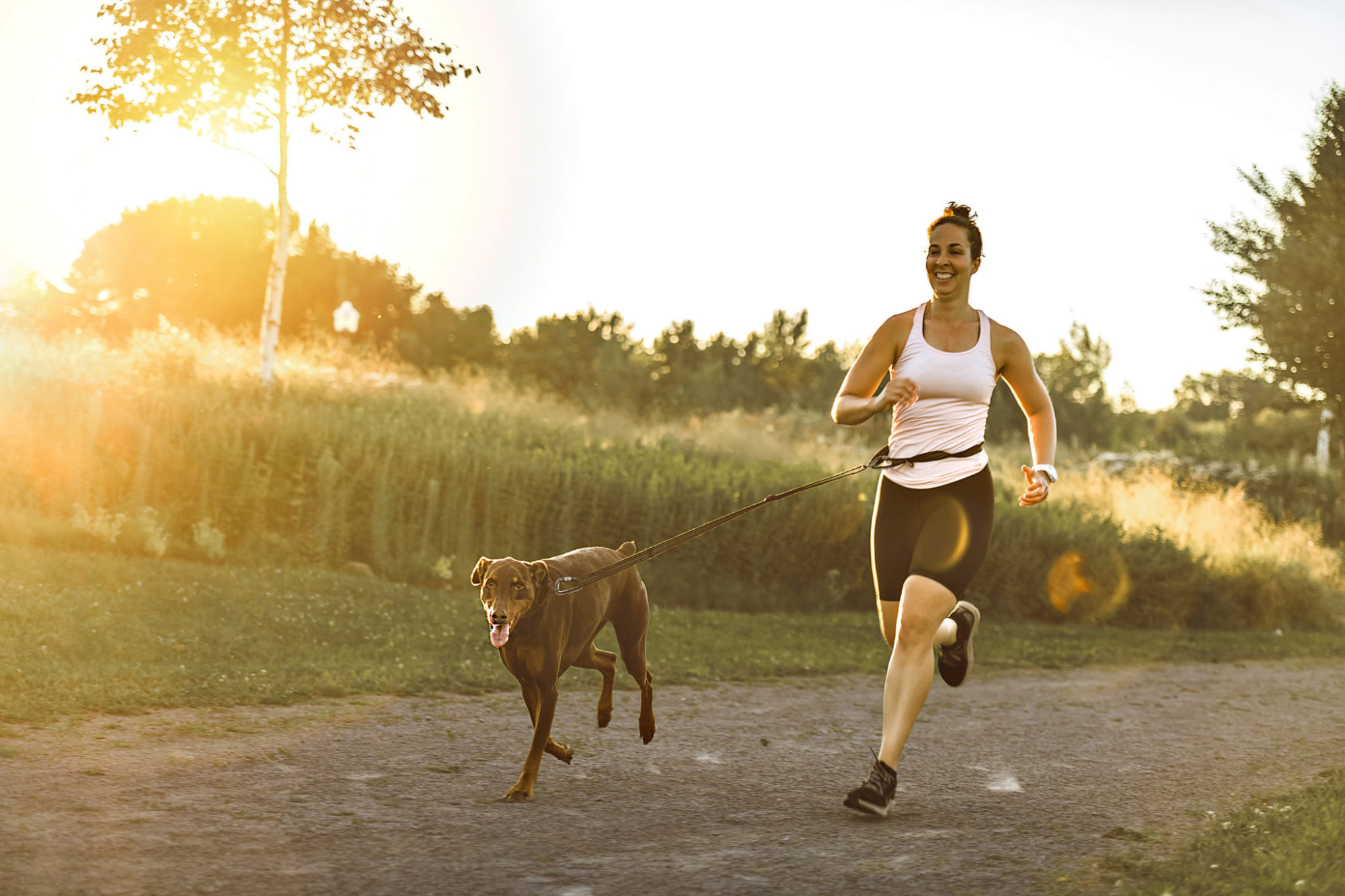How to Become Anti-frail: Prevent Oxidative Stress

“The greatest wealth is health.” – Virgil
The Antioxidant Conundrum
Everyone knows that oxidative stress is bad news: oxidative stress contributes to aging, diseases, and muscle damage associated with intense exercise.
The availability of high-quality antioxidant supplements provides a straightforward approach for athletes and the general population to reduce oxidative stress.
However, the discovery that reactive oxygen and nitrogen species play a critical role in many vital biological processes now casts doubt on the efficacy of antioxidant supplementation.
So, what’s the best way to prevent oxidative stress?
But First, What is Oxidative Stress?
Reactive oxygen and nitrogen species are highly reactive molecules that damage critical cellular structures like DNA, proteins, and cell membranes (1). Oxidative stress occurs when the number of reactive oxygen species (ROS) overwhelms your antioxidant defense systems (1).
What Causes Oxidative Stress?
Mitochondria are structures present within your cell that consumes oxygen to produce energy (1). Your mitochondria produce most of the reactive oxygen species in your cell as they produce energy from oxygen.
Unfortunately, your mitochondria are particularly vulnerable to being damaged by ROS. When mitochondria become damaged, they create more ROS, causing further mitochondrial damage (1). Thus, the vicious cycle of mitochondrial damage is responsible for the lion’s share of oxidative stress over your lifespan.
How Does Oxidative Stress Cause Aging?
Over time, ROS-mediated cellular damage accumulates to cause cell death and cellular senescence, which damages your organs, increases your frailty, and contributes to various disease states (Figure One) (1).
Cognitive Frailty
Your brain consumes 20% of your total oxygen, making your brain vulnerable to oxidative stress (2). Furthermore, because your neurons are long-lived cells that you can’t replace, they accumulate oxidative damage over time. Thus, oxidative stress is one of the critical drivers of age-related cognitive decline (2).
Cardiovascular Frailty
The heart is a very active organ. As a result, cells of the heart are packed with mitochondria, making them susceptible to oxidative stress (3). And indeed, your heart is vulnerable to oxidative damage as you age, as are the cells that make up your blood vessels (3). Thus, oxidative stress contributes to many cardiovascular diseases, including heart failure, stroke, and dementia caused by damage to your cerebral blood vessels (3).
Emotional Frailty
Even your emotional stability can be affected by oxidative stress! For example, depressed people often display elevated levels of oxidative stress and reduced levels of antioxidant defense (4). Further, antioxidant therapy can help alleviate symptoms of depression (4).
The Importance of Reactive Oxygen Species
Although it’s clear that oxidative stress is a driver of disease and aging, you may not appreciate that reactive oxygen species generated during exercise regulate the expression of genes that control your short and long-term adaptation to exercise.
Briefly, exercise-induced ROS help regulate the following adaptions to exercise:
- Mitochondria production
- Muscle hypertrophy
- The creation of new blood vessels
- Antioxidant defense systems
- Antioxidant repair mechanisms
Thus, we face a problem. On the one hand, oxidative stress contributes to aging and is a driver in many serious diseases. But, on the other hand, reactive oxygen species play an essential role in many biological processes involved in positive adaptation to exercise.
Antioxidant Therapy: Pros and Cons
What about antioxidant supplementation?
A recent study looked at how vitamin C and E supplementation affects your ability to adapt to strength and endurance exercise (5). To do this, the authors pooled nine clinical trials investigating how antioxidant therapy affects strength gains and nine studies that examined how antioxidant supplementation affects endurance gains (5).
Overall, the authors found that antioxidant supplementation did not affect either strength or endurance adaptations (5). Therefore, given the absence of a clear beneficial impact on performance, the authors conclude that consuming vitamin C and E is unnecessary (5).
But what about antioxidant supplements for overall health and longevity?
Here we can be more definitive in our recommendations. First, there is a clear inverse association between serum antioxidants and cardiovascular disease, cancer, and all-cause mortality, suggesting that people deficient in one or more antioxidants are more likely to suffer illness and die young (6).
However, multiple randomized trials have demonstrated that antioxidant supplements (β-carotene, vitamin A, vitamin C, vitamin E and, selenium) have no beneficial effect on cancer, cardiovascular disease, and overall mortality (6). Worryingly, vitamin A, vitamin E, and selenium supplementation may increase overall mortality (6)!
Thus, the emerging consensus is that you shouldn’t supplement with antioxidants unless you suffer from a specific vitamin deficiency (6).
Two Effective Ways to Protect Yourself from Oxidative Stress
1. Diet
Arguably the best way to optimize your intake of antioxidants is through a healthy diet. And by a nutritious diet, I mean a diet high in plant foods, including fruits, vegetables, whole grains, and legumes (6). There are several reasons why this is so.
First and foremost, a plat-rich diet significantly reduces the risk of coronary artery disease, stroke, cardiovascular disease, total cancer, and all-cause mortality (6).
Second, while a healthy diet supplies all of your antioxidant needs, it’s almost impossible to overdose on antioxidants by eating salad, fruit, whole grains, and legumes (7).
In contrast, supplements (which often provide ten times your daily requirement of antioxidants) may megadose you with antioxidants and therefore suppress the generation of healthy levels of ROS required for optimal health (7).
Third, a healthy and balanced diet provides a cocktail of antioxidant molecules that work in combination. For example, fruit and vegetables supply vitamin C, vitamin E, β-carotene, and various antioxidant polyphenol molecules (6). This combination of antioxidants works together by going to different cellular locations and targeting other reactive oxygen molecules present in your body.
Finally, some classes of natural antioxidants, particularly those found in broccoli and other cruciferous vegetables, switch on your biological antioxidant defense systems (6). Crucially, enhancing your intrinsic antioxidant defenses may be essential for people whose natural antioxidant defenses are waning due to old age.
A crucial and oft-overlooked point regarding antioxidants is that many of them are fat-soluble. Thus, to maximize your absorption of dietary antioxidants, include some healthy fat with your salads, such as virgin olive oil and avocado.
For example, adding virgin olive oil and avocado to your salad increases the absorption of essential antioxidants and nutrients. It also tastes delicious!
2. Exercise
The second way to naturally and safely boost your antioxidant defenses is through regular aerobic exercise.
Exercise has three crucial roles to play in protecting you from oxidative stress.
First, exercise increases your levels of natural antioxidant defenses (8). However, as described above, a certain level of ROS generation is required for optimal health. Fortunately, exercise fine-tunes your antioxidant defenses to allow healthy ROS levels while protecting you from severe oxidative stress (8).
Second, aerobic exercise increases the production of mitochondria in your cells. Notably, the production of new, healthy mitochondria triggers the removal of unhealthy mitochondria. Thus exercise removes a significant source of oxidative stress: damaged mitochondria (8).
Finally, exercise also increases your ability to repair oxidative damage. In particular, exercise increases the activity of cellular systems that repair protein and DNA molecules damaged by oxidative stress (8).
Take-Home Message
Oxidative stress is one of the primary drivers of aging and human disease. However, there exists a Goldilock zone of oxidative reactions that are necessary for optimal health.
So how do you protect yourself from oxidative stress while allowing healthy oxidative reactions to occur?
One way of achieving this is to combine a healthy, plant-based diet with exercise.
A plant-based diet provides a cocktail of antioxidant molecules that reduces unhealthy oxidative stress without overdosing your body with antioxidants and suppressing healthy oxidation.
Exercise naturally increases your antioxidant defenses while creating new mitochondria, removing unhealthy mitochondria, and activating repair mechanisms that remove oxidative damage.

References and Further Reading
1. S. F. Vatner et al., Healthful aging mediated by inhibition of oxidative stress. Ageing Res Rev 64, 101194 (2020).
2. A. Ionescu-Tucker, C. W. Cotman, Emerging roles of oxidative stress in brain aging and Alzheimer’s disease. Neurobiol Aging 107, 86-95 (2021).
3. C. Izzo et al., The Role of Oxidative Stress in Cardiovascular Aging and Cardiovascular Diseases. Life (Basel) 11, (2021).
4. A. Shao et al., Oxidative Stress at the Crossroads of Aging, Stroke and Depression. Aging Dis 11, 1537-1566 (2020).
5. T. Clifford, O. Jeffries, E. J. Stevenson, K. A. B. Davies, The effects of vitamin C and E on exercise-induced physiological adaptations: a systematic review and Meta-analysis of randomized controlled trials. Crit Rev Food Sci Nutr 60, 3669-3679 (2020).
6. D. Aune, Plant Foods, Antioxidant Biomarkers, and the Risk of Cardiovascular Disease, Cancer, and Mortality: A Review of the Evidence. Adv Nutr 10, S404-s421 (2019).
7. M. R. Higgins, A. Izadi, M. Kaviani, Antioxidants and Exercise Performance: With a Focus on Vitamin E and C Supplementation. Int J Environ Res Public Health 17, (2020).
8. N. V. Margaritelis, V. Paschalis, A. A. Theodorou, A. Kyparos, M. G. Nikolaidis, Redox basis of exercise physiology. Redox Biol 35, 101499 (2020).
Acknowledgments
Imaged created by Punnarong
Disclaimer
The material displayed on this website is provided without any guarantees, conditions or warranties as to its accuracy.
Information written and expressed on this website is for education purposes and interest only. It is not intended to replace advice from your medical or healthcare professional.
You are encouraged to make your own health care choices based on your own research and in conjunction with your qualified practitioner.
The information provided on this website is not intended to provide a diagnosis, treatment or cure for any diseases. You should seek medical attention before undertaking any diet, exercise, other health program or other procedure described on this website.
To the fullest extent permitted by law we hereby expressly exclude all warranties and other terms which might otherwise be implied by statute, common law or the law of equity and must not be liable for any damages whatsoever, including but without limitation to any direct, indirect, special, consequential, punitive or incidental damages, or damages for loss of use, profits, data or other intangibles, damage to goodwill or reputation, injury or death, or the cost of procurement of substitute goods and services, arising out of or related to the use, inability to use, performance or failures of this website or any linked sites and any materials or information posted on those sites, irrespective of whether such damages were foreseeable or arise in contract, tort, equity, restitution, by statute, at common law or otherwise.

Ten Minutes is All You Need
Research has shown that ten minutes of moderate-to-vigorous exercise performed each day is enough to significantly reduce your risk of early death.

How to Avoid Heat Rash this Summer
30% of people living in the tropic or regions where the summer is hot and humid suffer from heat rash. Dilute bleach baths are a useful approach to help keep your skin healthy during the summer heat.




